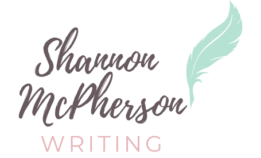As writers, how many times have we heard the advice “show, don’t tell?” What that means varies from writer to writer. When I was taught this mantra, I was instructed to paint readers a visual picture instead of simply saying “the barn was red.” Instead, I should write something like “the barn was the color of freshly picked red delicious apples.” I may be going a bit over the top with that example, but I think you catch my drift.
A friend of mine recently shared an article on the site Lit Hub written by Sonya Huber entitled “The Three Words That Almost Ruined Me As a Writer: ‘Show, Don’t Tell,’” and it gave me a lot of food for thought. The practice of showing your readers what is going on is an excellent tool for helping writers work on their descriptive skills in their writing. However, I feel like in a lot of the books I read, authors show me far too many details when they could just simply tell me.
I don’t want to quote the book verbatim, but I was recently reading a YA Fantasy novel that is part of a trilogy. Instead of telling me that a character’s eyes were black, the author wrote something along the lines of, “his eyes were as deep and soulful as a midnight sky twinkling with hidden secrets.” Again, I’m going a bit over the top with this example, but once I noticed that the author was describing every little thing in such fiddly detail, that’s all I could notice. When does showing, instead of simply telling, become a crutch?
When you’re writing, you want to put your readers right there in your scene, deep in the action. You want them to experience the gentle breeze tickling their faces as the main character stands on the edge of a cliff overlooking the ocean. You also want them to experience what the characters are feeling, go along with them on their ride of emotions. Harkening back to Huber’s article, she says she tells her students to “show and tell.” Finding an equal balance between the two is important in your writing.
As a writer, you want your moments of “showing” to feel natural and not forced, which is what I felt with the above example I gave from the book I recently read – it felt totally forced. When it feels forced, it takes your reader completely out of reading your story and makes them realize, “hey, I’m reading something.” You want them to be completely enraptured in your tale that they forget they’re living their own life for a few moments. If you overuse the “showing,” you lose that effect.
Another article I found that is helpful in learning how to effectively balance the two is “My Golden Rules to ‘Show Don’t Tell’” by Leona Brits on The Writing Cooperative. Brits says “show is a tool used to pull the reader to a scene. By using it, you’re creating a connection between the reader and your scene/character. This happens because you’re making the reader interpret what’s happening, instead of telling him what he should understand or feel.”
In its essence, “show, don’t tell” is all about instructing writers how to be effectively descriptive in their writing. Finding that balance between showing your readers enough details so they feel and experience the emotions of your characters, rather than just telling them what to feel, is half the battle. Overusing your descriptive details can pull your readers out of your story instead of immersing them in what is going on.
How do you view “show, don’t tell?” Have you found ways to balance it in your own writing?

